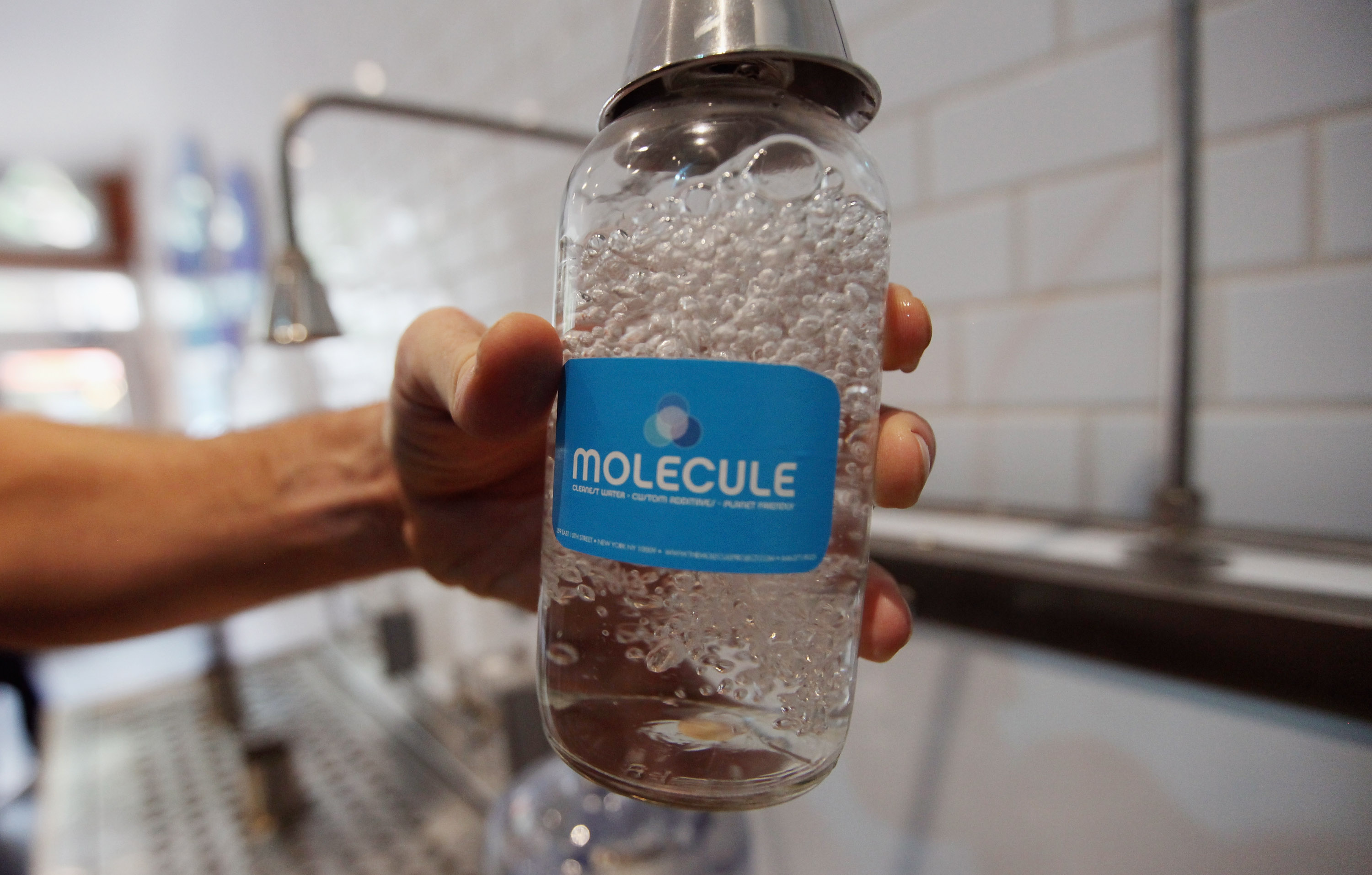Water is an essential element. For millennia we’ve been trapping it, welling it, boiling it, and springing it forth. There are written methods for sand or gravel filtering and boiling of rain water that date back to ancient Egypt, Greece, and India. We’ve also spent a lot of time looking for mineral water springs gurgling up from the ground — building baths and spas around these magical healing waters as far back as 3,000 years ago.
Mineral springs as a destination reigned supreme for ancient tourists. Then, in 1621, in Holy Well, England, water was bottled the first time for the consumer market. Suddenly you didn’t have to trek to the source, you could find the healing waters in the local grocer. Of course, we bottled and stored water for transport well before that, but Holy Well was the first time it was done on a large scale and for broad export.
From 1621 onward, bottled water gripped the consciousness of health-minded people the world over. Water barons would drill for springs across the world– searching for that perfect mineral balance. Eventually, through German ingenuity, public drinking water became potable and it looked as though bottled water would take its death kneel. Then one intrepid company from France revolutionized the industry in the late 70s and gave us the 100-billion-dollar-a-year bottled water industry we know today, bringing with it a blight of waste that has yet to be solved.
I. A SPRING IN ITALY
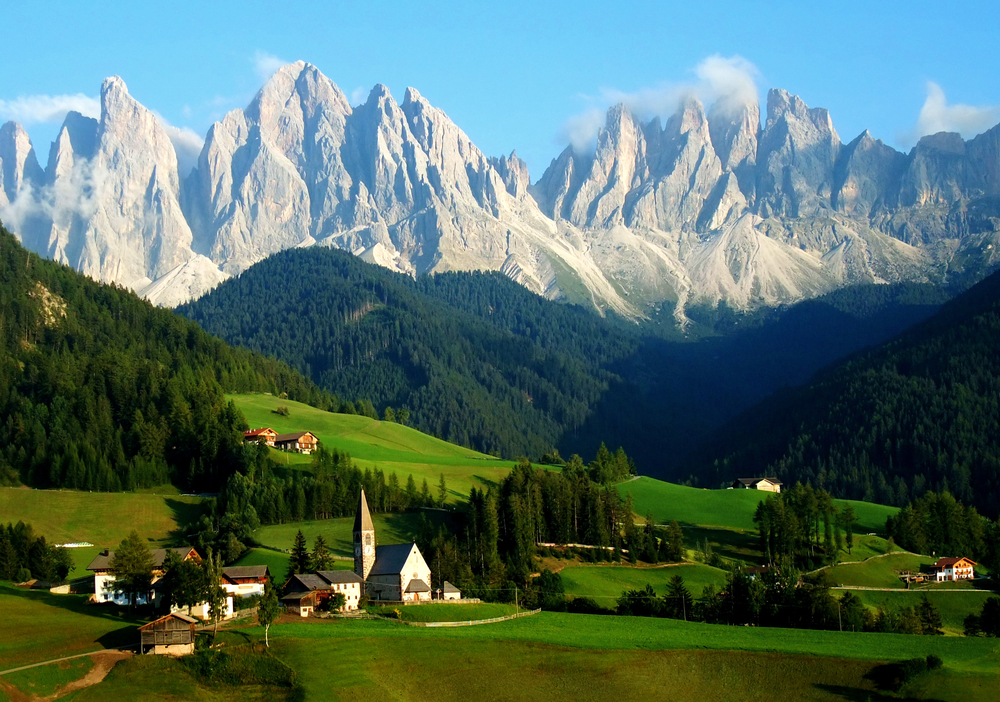
Deep in the Italian Alps, there’s a place where the mountains jut from the earth like shark’s teeth, ready to maul the sky. These are the Dolomites. 700 years ago, Italians living in the region found a natural mineral spring bubbling up from the mighty mountains. The water travelled over dolomite and gypsum rocks 1,300-feet below ground, fortifying the liquid with large amounts of calcium, magnesium, sodium, potassium, fluoride, chloride, and sulfates. This is what makes mineral water mineral water. Contrary to American colloquialisms, real mineral water has to come from a mineral spring and contain actual minerals… not just bubbles.
The waters of this spring, at San Pellegrino, grew so famous that by the 1500’s Leonardo da Vinci made the trek from Milan to the source, so that he might enjoy the waters and test their viability. The San Pelligrino water you buy today is almost identical to the analysis taken in the early 1700s — which means when you drink a bottle, you might be scoring some of da Vinci’s backwash.
The San Pellegrino spring became a proper tourist attraction and an entire spa was built around the source by the 1800s. Seeing an opportunity to export the waters beyond the Italian Alps, the city sold off 75 percent of the area — allowing a bottling company to build a plant. A bottling plant was set up and, after quick carbonation process (the addition of carbon dioxide), the nourishing waters were ready for the public.
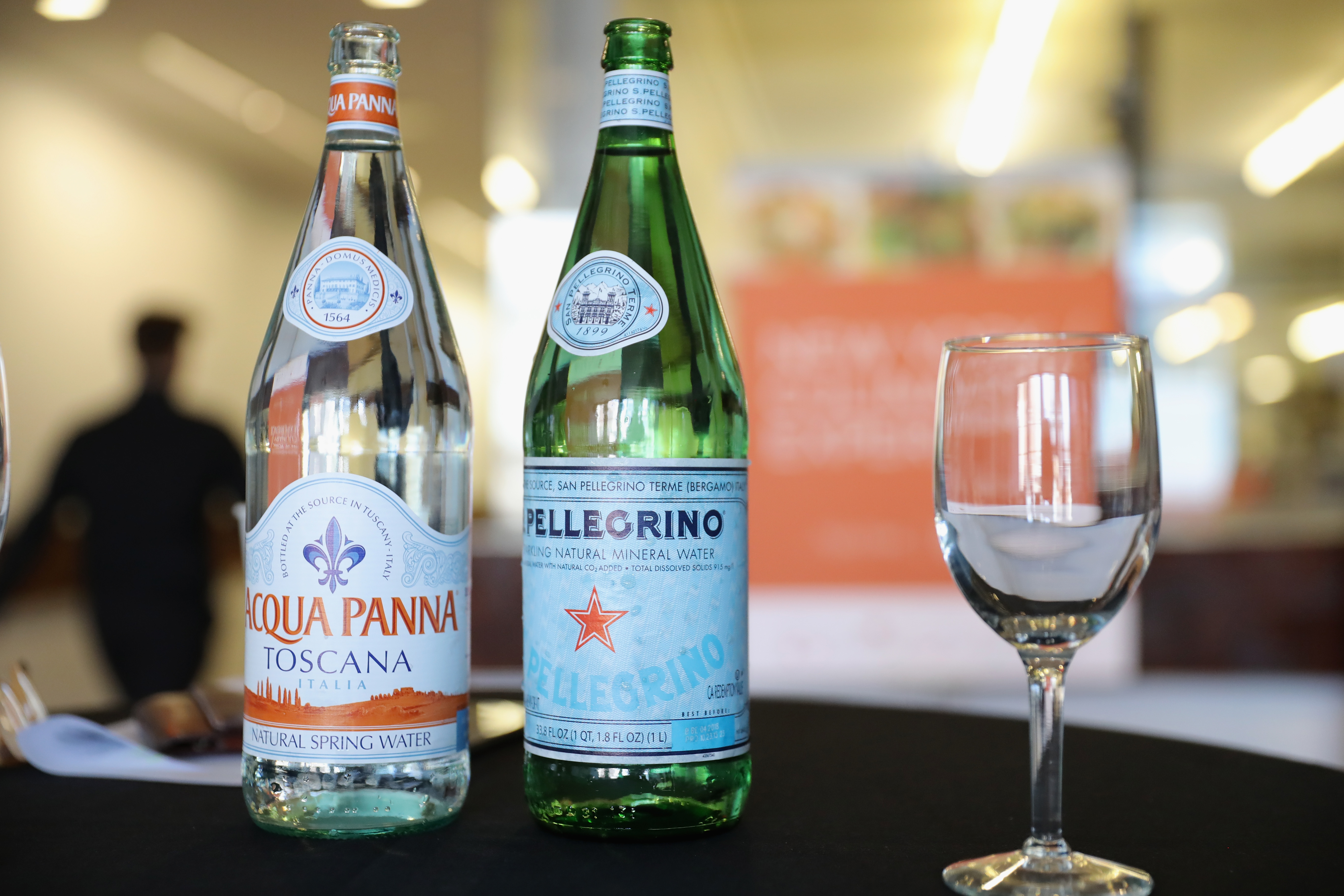
By 1899, the San Pellegrino spring produced 35,000 bottles of bubbly water per year, exporting them around the world. Within nine years that number would explode to 5,000,000 bottles, worldwide.
One of the biggest export destinations was the United States. New York’s Italian population identified with the taste of the home waters (and surely enjoyed seeing a product straight from their homeland), and 1900’s New York water was notoriously deadly when taken directly from city wells. The risk of typhoid and cholera were real.
Bottled water was king in America for those who wanted to get some much needed minerals… and, you know, not die a horrible typhoid-induced death like the kids on Oregon Trail.
II. MEANWHILE, IN SWITZERLAND
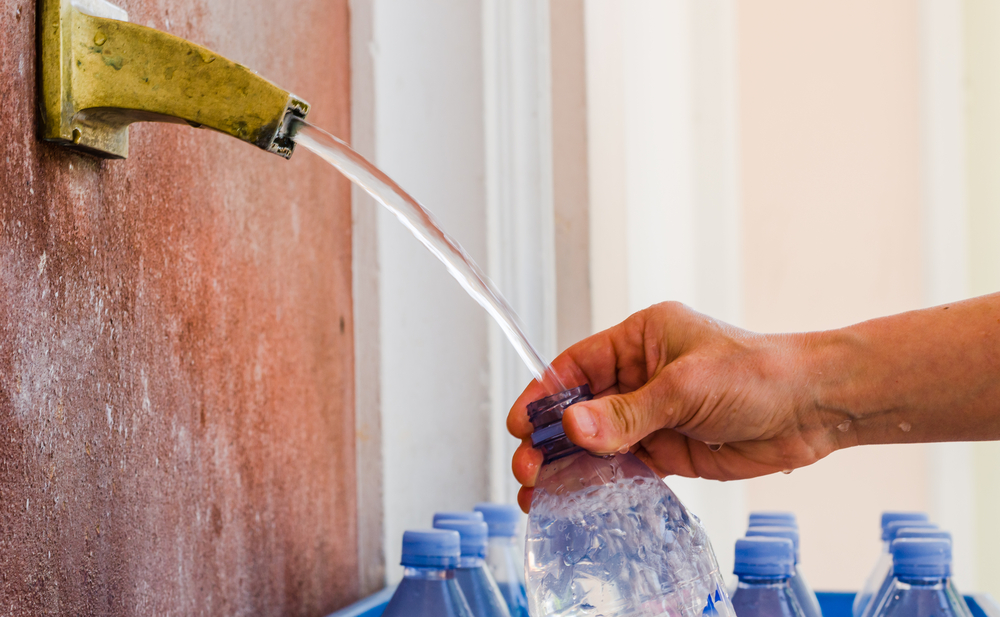
In 1789, the Marquis de Lessert was wandering about his buddy’s Swiss property in Evian-les-Bains — which happened to boast a mineral spring. The Marquis sampled the water and decided it was a miracle cure (it’s more likely that he’d just enjoyed pure water for the first time and felt good because, you know, water is good for you). The Marquis broadcast that his kidney stones were cured by the water and the name Evian became hugely famous across Europe.
By the mid-19th century Evian was lost to France in the Treaty of Turin and Switzerland lost an iconic water to another country. Around this time, a massive spa and resort were built around the spring and Evian became the water that European aristocracy flocked to for its “curative” qualities. Again, let’s get a little perspective: We are talking about a society that largely consumed hydration through boiling tea or coffee and drinking beer. So any pure water consumption, especially a water with a very high mineral content, surely did make them feel better.
Imagine having a 20-year-long hangover and then finally getting to drink a bottle of mineral-filled water for the first time. You’d probably feel like Superman.
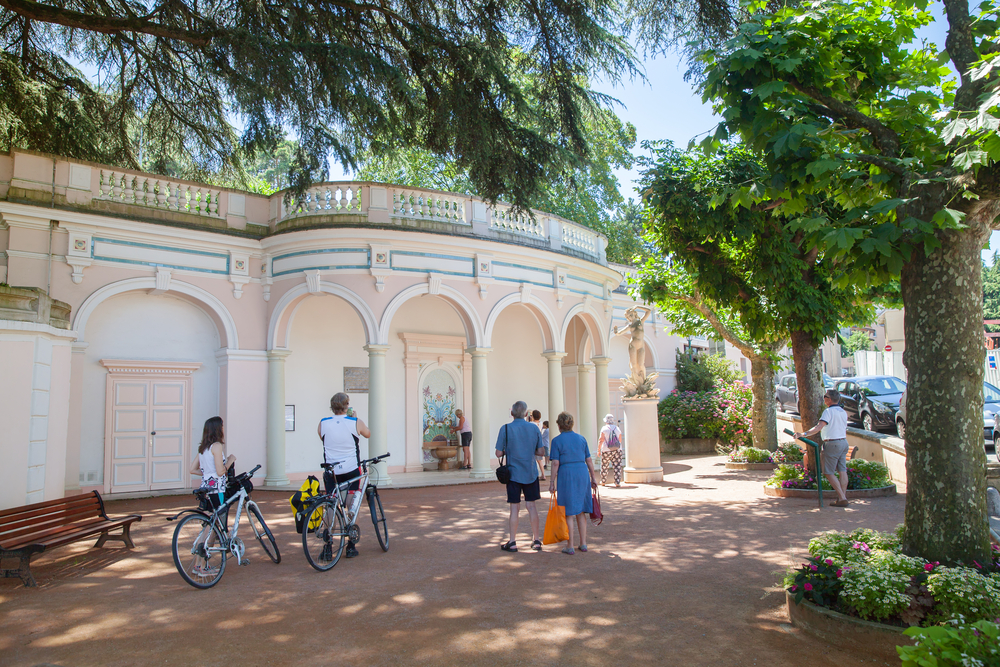
Having seen the success of other bottling companies like San Pellegrino and Gerlosteiner, Evian started bottling and shipping their water all over the world in 1908. The water was beloved for its flavor and mineral components. The next year, they opened The Evian Royal Palace, a massive spa and destination resort for tourists — which you can still stay at to this day (bring some serious cash).
Evian would go on to revolutionize the baby formula industry by posturing the purity of the water as the only way to make the faux milk for newborns. By 1935 they were bottling baby bottles of water that didn’t need to be boiled first. Suddenly, the bottled water that was mostly consumed by rich Europeans was for even for babies.
III. AMERICAN WELLS AND THE DAWN OF YUPPIEDOM
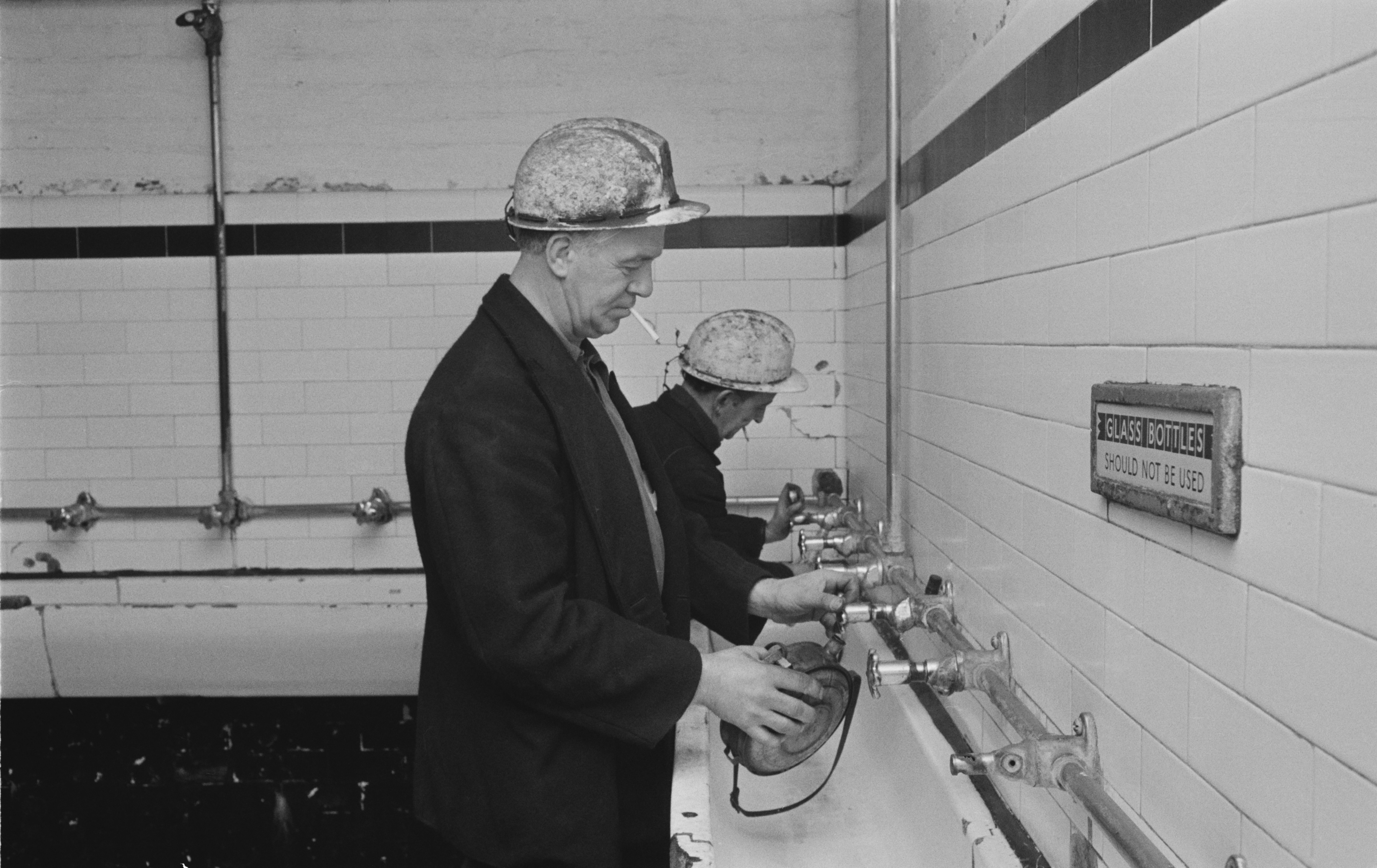
The U.S. had notoriously bad water for a long time. During the World’s Fair in Chicago in the late 1890s, water had to be shipped in from as far away as Wisconsin to avoid a typhoid outbreak. And that was just one — quite modern — city.
The Germans spent the mid-1800s devising something to make public drinking water safe for everyone — chlorination. The process was so successful in Germany that it was adopted in 1908 across parts of the USA so that Americans would have free access to clean public drinking water. The movement came to a nadir in 1974 (!) when the feds stepped in and enacted the Safe Drinking Water Act. This standardized the quality of water across the country — which still had a 40 percent failure rate when it came to supplying potable water to citizens. During the 20th century, America’s (and Europe’s) water was finally cleaned up, and it looked the death knell of bottled water.
In 1976, Perrier decided to spend $5 million dollars to reinvigorate the bottled water market in the U.S. Their timing couldn’t have been better as “yuppies” were becoming a thing, thanks to Don Drapers, eager to sell upper-class wares. Perrier was cool, a little expensive, and imported. The proles drank from the tap. Rich yuppies drank from a little green bottle from France. Perrier commented on their success that their bottled water “was all the things yuppies wanted in a lifestyle-defining product.” How did they convey this social-climbing metaphor? They hired Orson Welles to narrate a commercial and pronounce the word ‘Perrier’ like an aesthete cosmopolitan.
With that, the modern bottled water industry was born.
IV. THE POISON IN THE WELL
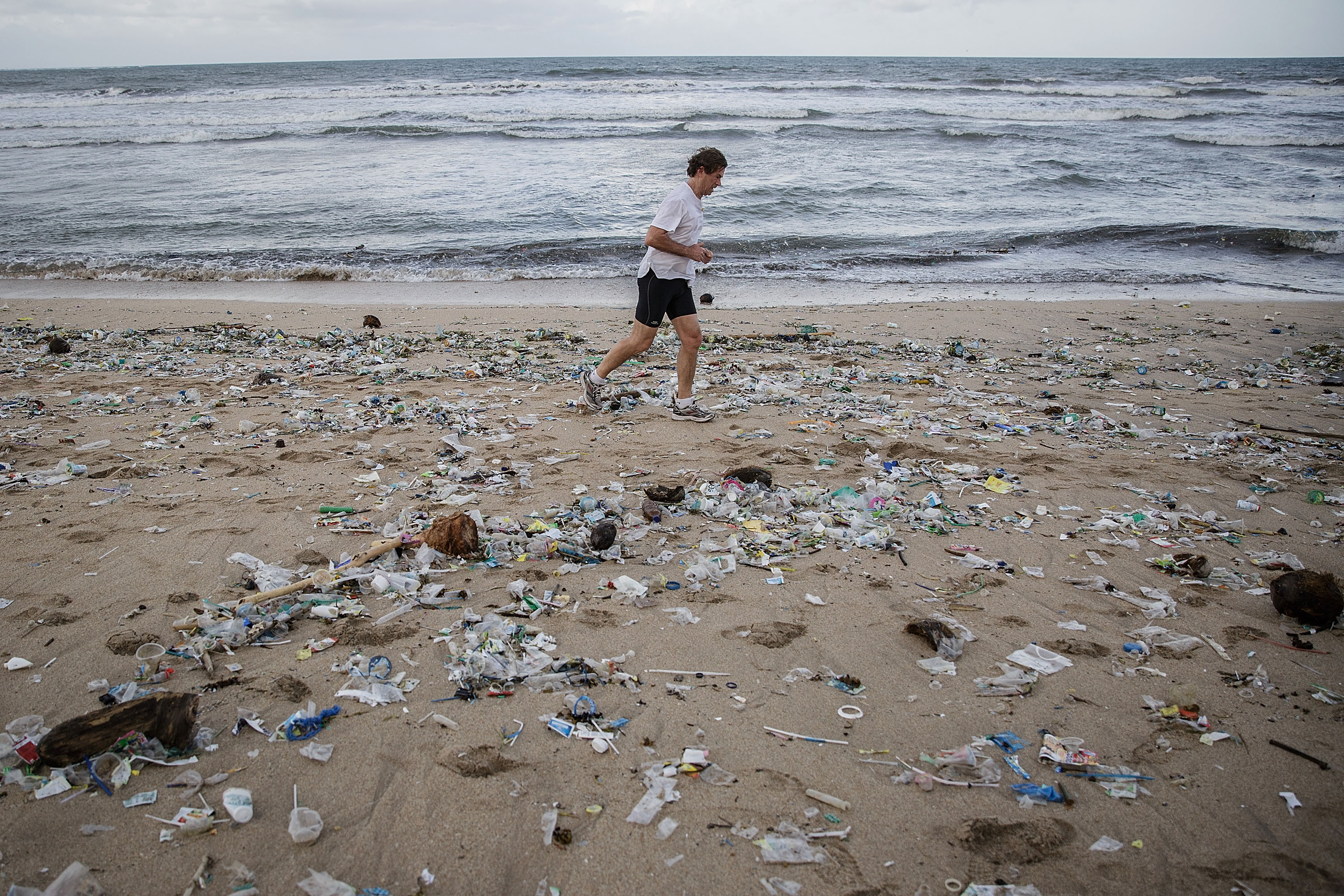
The New York Times reported in April of 1983 that New York City appeared to be “drowning in a sea of carbonated waters.” Between the 1977 and 1985 bottled water sales quadrupled, and have been climbing ever since. Companies like Evian — which had previously focused more on curative benefits — started hawking themselves as the perfect post workout drink in a now hilariously over-sexualized 80s commercial. They may as well said “We aren’t just for babies anymore.”
By the end of the ’80s, Perrier had a whopping 45 percent global market share in bottled water. Then in February of 1990 it all came crashing down for the little green bottle of fizz. It was discovered that Perrier had trace amounts of benzene in their American water, forcing a U.S. recall. Their market share sank to 20 percent. The rest of the bottled water world saw an opportunity in the gap left by Perrier.
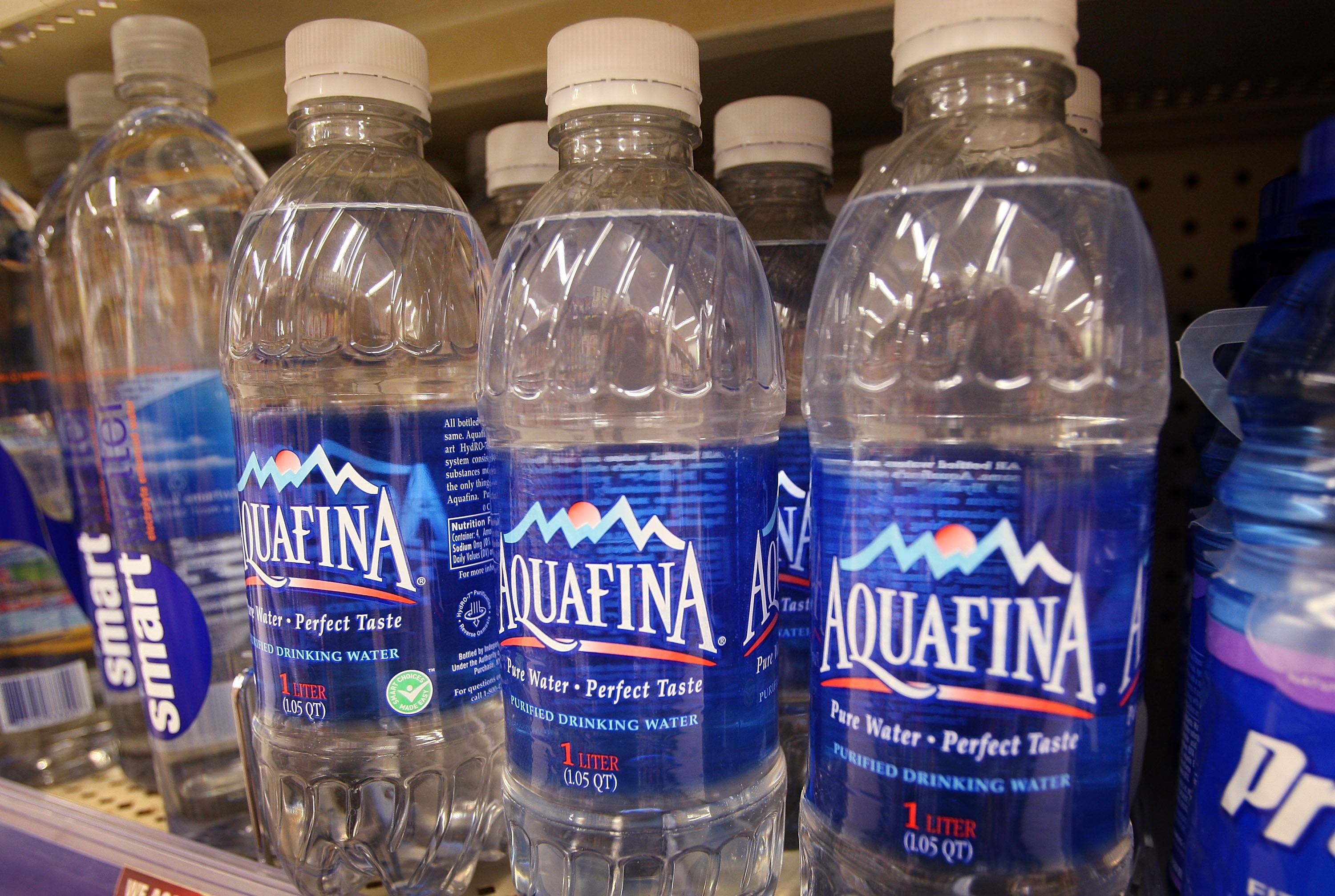
In 1994, Pepsi Co. invested $3 million to purify municipal tap water in Wichita, Kansas — creating the Aquafina brand. Coca-Cola would do the same with their own Dasani water shortly thereafter. By 2003, Aquafina brought in $8.1 billion for Pepsi. There is a downside, of course. Those sales numbers translate to Americans using 50,000,000,000 — yes, BILLION — plastic water bottles per year.
We only recycle 23 percent of those bottles.
The costs are twofold:
- There’s the amount of money we’re spending as a consumer. Ban the Bottle notes that “The recommended eight glasses of water a day, at U.S. tap rates equals about $.49 per year; that same amount of bottled water is about $1,400.” Remember here that you’re most likely drinking tap water that has been purified and bottled like Aquafina and Dasani. To avoid this amount of wasted capital in your bank account, simply get a water purifier at home and a reusable bottle to fill up. And, in most cities, purification isn’t really that necessary.
- There’s the matter of the bottles themselves. The manufacturing of all those bottles uses up 17 million barrels of oil. That’s enough to power 1 million cars for a year. And we’re throwing away 77 percent of that non-renewable resource every single year. That’s about as un-woke as you can get as a consumer.
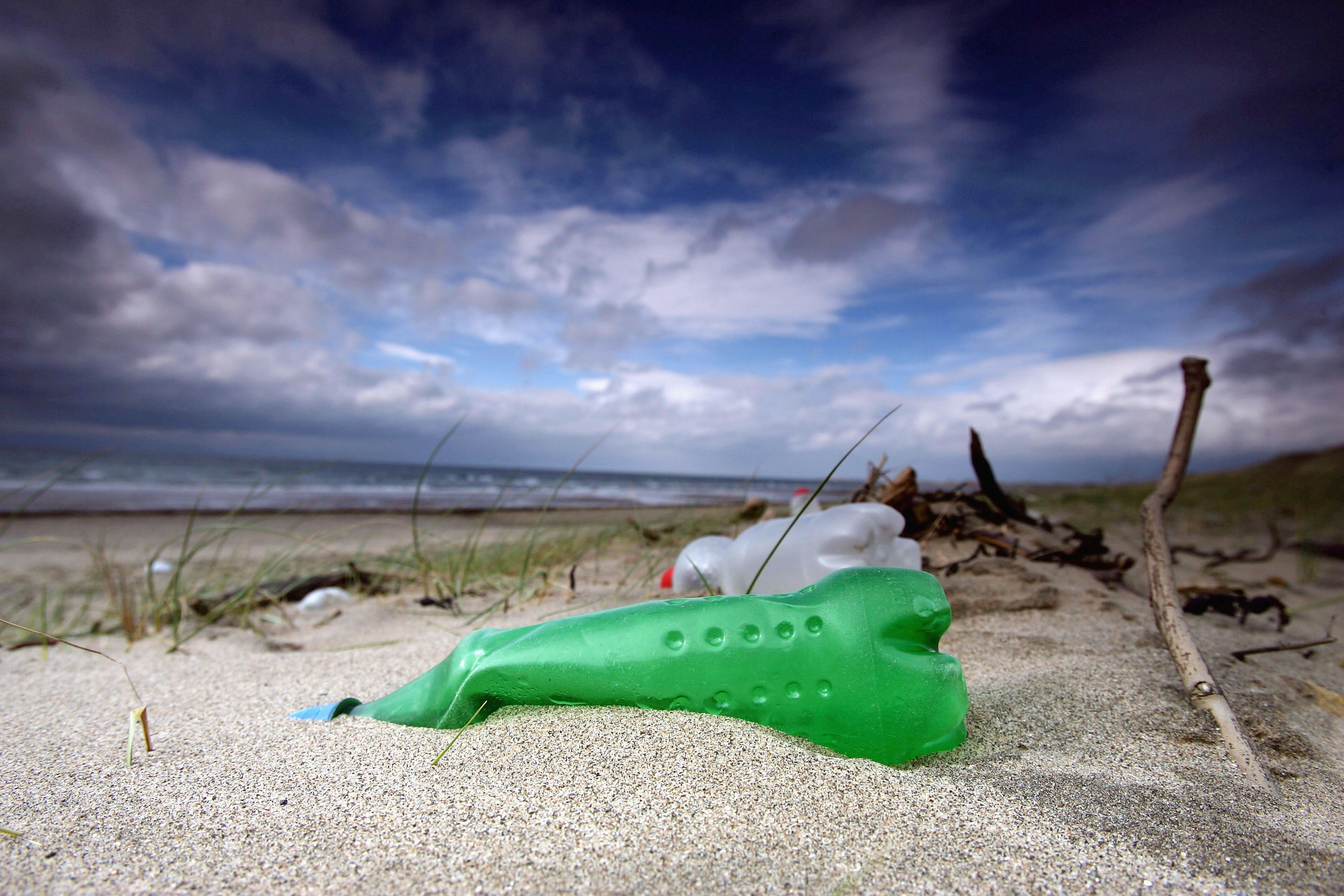
So what are the solutions? Stopping buying purified tap water is a big one. Buying a mineral water that comes from a certain source with a specific mineral content is one thing, but paying for purified water doesn’t seem vital. Reusable water bottles help too. It’s important to remember that 90 percent of Americans have perfectly potable drinking water coming out of their taps.
Devising a better bottle return system is another step in the right direction. 11 U.S. states have deposit return schemes in place. However, these usually require the consumer to collect bottles and schlep them to a return center. Countries like Germany and Norway have a universal bottle return system that puts reverse vending machines in every single supermarket across the country, meaning you can return your bottles with ease and put the money owed you right on your grocery bill or simply collect the cash from the teller. Several Canadian provinces have a similar system where you can return your cans and bottles directly to the store when you check out.
The beer vendors in those countries refund beer cans and bottles have a 94 percent return rate. That’s impressive by any metric.
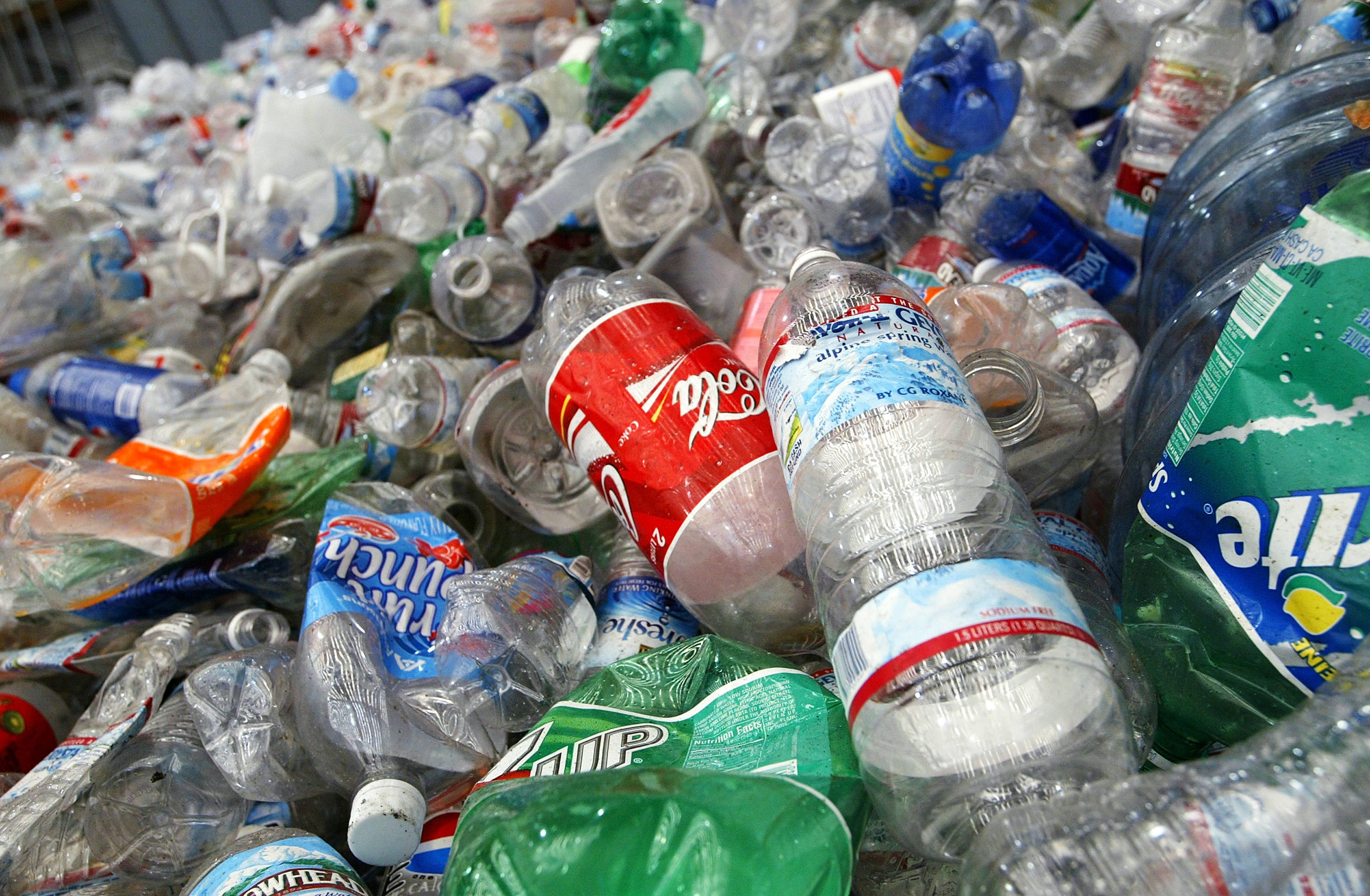
The longterm solution is to rid ourselves of the plastic bottle all together. Returnable glass bottles are making a comeback with many arguing that they taste better too. Also, some science folks have been developing biodegradable bottles made from algae that would serve as fish food when we inevitably throw away the bottle and it ends up in the ocean.
Lastly, we need to ask ourselves if we really need to buy that single-use plastic bottle of water in the first place. We know that we are going to drink bottled water, a trend that spans centuries isn’t just going to cease to exist. We live in a world where being a water sommelier is a real and profitable career. Mineral water does have wildly varying tastes due to it’s mineral content, and, therefore, will provide the drinker with a different set of nutrients.
At the end of the day, it’s going to take a combo approach, like so many environmental issues. Biodegradable bottles combined with a concerted effort to refund glass bottles and simply making an effort to recycle the plastic bottles are all necessary to quell the ridiculous damage we’re doing to the environment with our love of bottled water.

